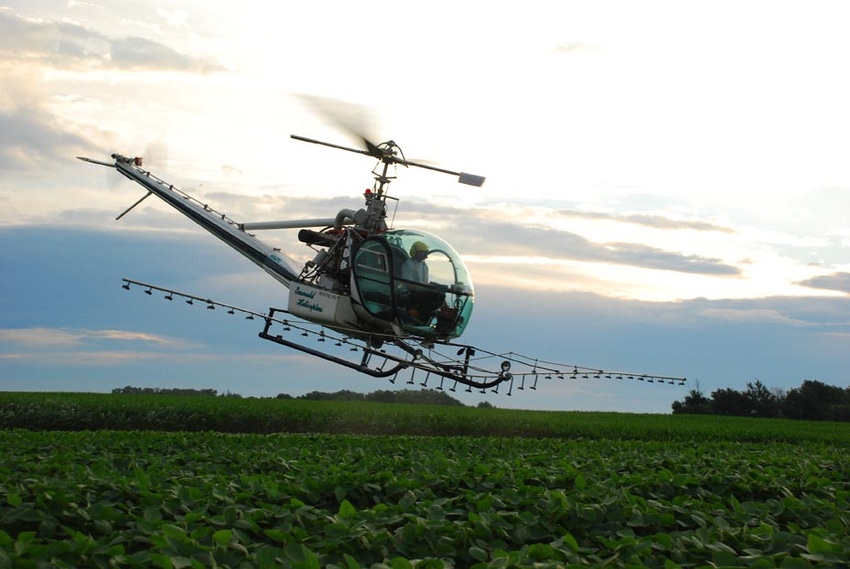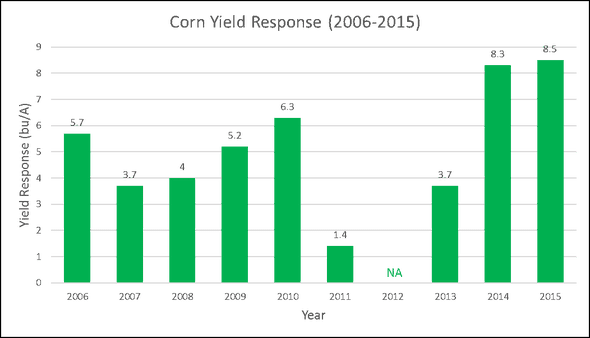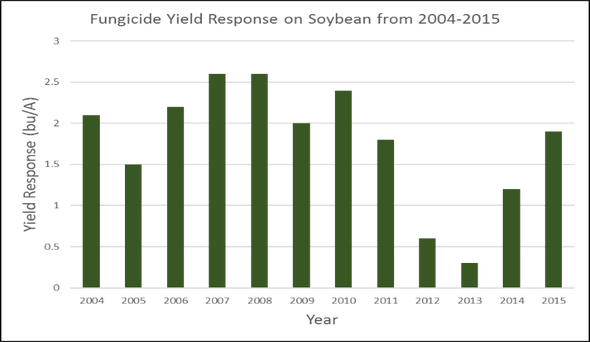July 29, 2016

Many parts of Iowa have airplanes buzzing low over the ground applying fungicides. The question is whether or not there will be a positive return with this application.
First, let’s start with some simple math, the average cost of a fungicide is $10 to $15 per acre, the cost of application is $12 to $15 per acre for aerial and $5 to $8 per acre for ground. This brings the total cost of spraying the fungicide to between $15 and $30 per acre.
Next, an estimate of the crop cost needs to be figured in. Let’s be optimistic and say $3.50 for corn and $10 for soybeans. This means on corn, the farmer will need at least a 4.3 to 8.6 bu/acre yield response from the fungicide to break even and a 1.5 to 3 bu/acre to break even on soybeans.
Finally, let’s analyze the likelihood of a fungicide having a return-on-investment in a drier year like we have experienced in 2016. Historically, both corn and soybeans have followed very similar trends for yield responses from fungicides. When the summers are drier like we are experiencing this year, disease pressure is lower therefore the yield response from a fungicide is typically smaller.
To illustrate this point, the graphics below show the average response to fungicides tested with the Iowa Soybean Association (ISA) On-Farm Network® since 2006.
Keep in mind the below graphics only show the average yield response. It is still possible for a fungicide to give a positive return-on-investment, but on-farm and Iowa State University testing shows that the probability is much lower when conditions are not favorable for disease.
Situations where the variety or hybrid is very susceptible to foliar diseases, such as northern leaf blight on corn, will increase the likelihood of a fungicide giving a positive return-on-investment. Look up the disease susceptibility or talk to your seed dealer to find out more information about your specific hybrid.

 Another reason, besides yield, farmers are spraying fungicides is to improve end-of-year standability of corn. It may not add more bushels to the bin, but can make harvest go much smoother.
Another reason, besides yield, farmers are spraying fungicides is to improve end-of-year standability of corn. It may not add more bushels to the bin, but can make harvest go much smoother.
It is good practice for farmers to leave some check strips during application to test how effective products or practices are on their operation. If applying a fungicide, leave some strips untreated and have the results analyzed by an unbiased organization. If interested in submitting trials to be analyzed please contact your regional field research specialist.
You May Also Like




